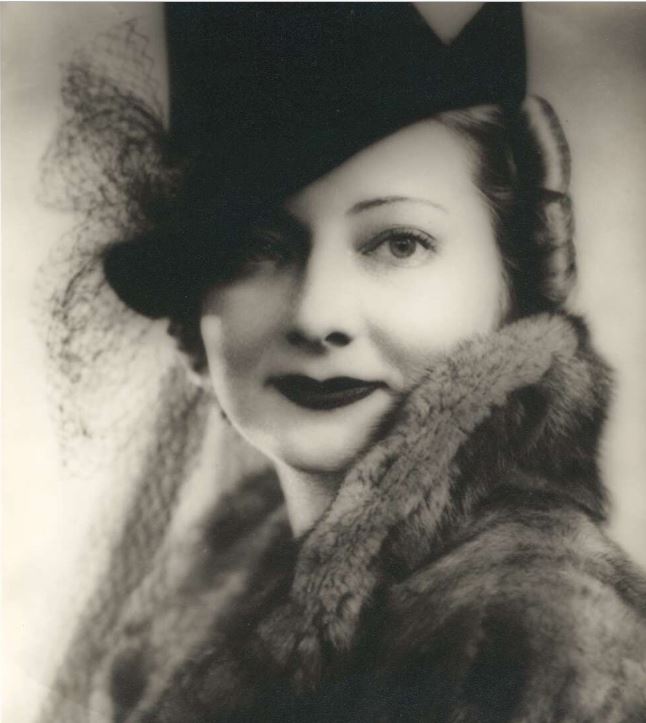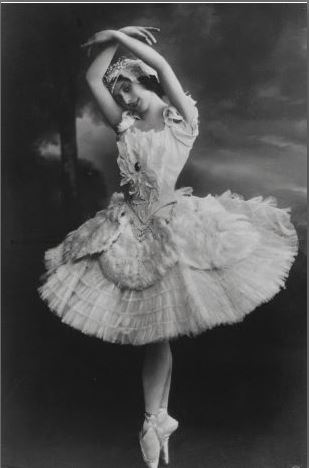December 10th, 2023Madame Borovansky and 46 West Street, Daylesford

WHO’S BEEN SLEEPING IN MY HOUSE was the title of an ABC television series which researched the fascinating history of a selection of Australian homes and the people who once inhabited them.
With our district’s long and colourful history, we have our fair share of interesting stories attached to local houses and the people who once occupied them. Some of these stories go back to the gold rush era or even earlier. Others to more recent times.
An example of a house with an interesting story from more recent times is No. 46 West Street, Daylesford. This simple Californian bungalow style house sits on a large block with a spectacular view to Wombat Hill. It is currently a holiday rental named ‘Churchills’.
In 1973 the property was purchased by a woman named Xenia Borovansky. It is her story which adds such a colourful layer to the history of this Daylesford house. Who was Xenia Borovansky? Those with some knowledge of the history of the Australian Ballet may be familiar with the name Borovansky.
Xenia Borovansky was born Xenia Nikolayena Smirnova in 1903 in Russia and was the niece of the great Russian ballerina Anna Pavlova (pictured below). Xenia was taught ballet at the Bolshoi Theatre and after her family migrated to Germany she joined Anna Pavlova’s troupe. It was there she met Czech-born dancer Edouard Borovansky whom she would later marry and thus become known as Madame Borovansky.

In 1938 the couple travelled to Australia with the Royal Covent Garden Russian Ballet. At the end of the tour and with the outbreak of WWII imminent, they decided to stay.
Together they established a ballet school in Melbourne which they named ‘The Melbourne Academy of Russian Ballet’. The academy grew and in 1940 they established the ‘Borovansky Australian Ballet Company’.
With its various reincarnations the Borovansky Australian Ballet Company became the precursor to
Australia’s National Ballet Company – ‘The Australian Ballet’ which formed in 1962.
Edouard choreographed a number of works for the Borovansky Australian Ballet Company, often with Australian themes. One was titled Terra Australis, which is credited by some to be the first all-Australian ballet, and the first with an Aboriginal theme. It premiered in Melbourne in May 1946 and was focused on Australia’s colonisation by white settlers.
‘Boro’ as Edouard was called by those who knew him, was a colourful extrovert renowned for being a strict disciplinarian and somewhat of a womaniser. He would become known as the ‘Father of Australian Ballet’.
Xenia, a far more reserved personality, became the head teacher of the Borovansky Ballet. She also choreographed some works and designed costumes. It is said it was because of her height that she never became a great ballerina, so turned to teaching instead.
Australia’s first ballet dancer of Indigenous heritage Noel Tovey AM was a pupil of Xenia’s. She provided him with free lessons and in his book titled Little Black Bastard he writes: “When I look back at all the teachers I had in my career, I would have to say that when it came to teaching style there was no other better than Madame Boro”.
The late Barry Kitcher, an ex-Borovansky Company dancer who was interviewed by ballet historian Michelle Potter, spoke of his impressions of Xenia Borovansky in a National Library oral history interview.
“She was very tall, extremely tall – she towered over Boro – and she wore high heel shoes as well. She was so regal and elegant and when she walked into a room it was like a star. She had rather bulbous eyes. You really stopped and looked at Madame Boro as she came in…she was a very impressive lady. Her carriage and her stature were outstanding.”
In an article which appeared in The Argus newspaper on June 25, 1955 we are told: “…Russet-haired Madame Borovansky, an artist from her fingertips to her dancing toes, is a serious withdrawn personality, content with her pupils, her home and piano studies…she still takes lessons. But there is a lighter side. Last night she was a witch in Carnival Fantasy at Chevron to help the Red Cross…”
Edouard and Xenia became well-known identities in Melbourne and lived in a grand old mansion ‘Strathnaver’ in Hawthorn. Edouard died suddenly whilst on tour in December 1959. After Edouard’s death Xenia continued teaching and running her Melbourne ballet school.
Xenia would have been around 70 years old when she purchased 46 West Street. Why she decided to buy this particular Daylesford property and at this stage of her life is unclear.
Daylesford in the 1970s was a quieter and very different place than it is today. It became the home of many creative and bohemian-type figures who fell in love with its beauty, tranquillity and affordable real estate.
Perhaps this also attracted Madame Borovansky to Daylesford in her retirement. Daylesford may have also been a place that held nostalgic memories of holidays spent with ‘Boro’ and friends. The drawcard
for this particular property was very likely that magnificent view to Wombat Hill along with the spacious grounds.
After Xenia Borovansky died in 1985 her house in Daylesford was put up for sale. An article appeared in the Daylesford Advocate and was headed; ‘Borovansky’s House Under the Hammer’. The article tells us that “… Many of Madame Borovansky’s former pupils shared time with her in what became an ideal retreat…”
Some of these former pupils may have included famous dancers who became the nucleus of our national ballet company – names such as Garth Welch and Marilyn Jones.
When visiting a local woman in her West Street home some years back, she told me as we were chatting, that there was a connection to Anna Pavlova and a house nearby. I was intrigued, although I
wondered how true this was. A few years ago when I came across The Advocate article, I carried out some further research and I found it was indeed true.
It is not hard to conjure up an image of an ageing but still graceful and elegant Madame Borovansky relaxing on the front porch at 46 West Street. As she gazes across to that beautiful vista of Wombat Hill perhaps she is reminiscing about days long ago when she danced with her aunt – the great Anna Pavlova.
Xenia Borovansky died on the 25th November 1985 at the age of 82 and is buried with her husband Edouard in the Box Hill Cemetery. Their gravestone reads: DOYENS OF THE RUSSIAN SCHOOL OF BALLET IN AUSTRALIA. FOUNDERS OF THE AUSTRALIAN BALLET.
So who’s been sleeping in your house? Words: Heather Mutimer | Images: National Library of Australia










